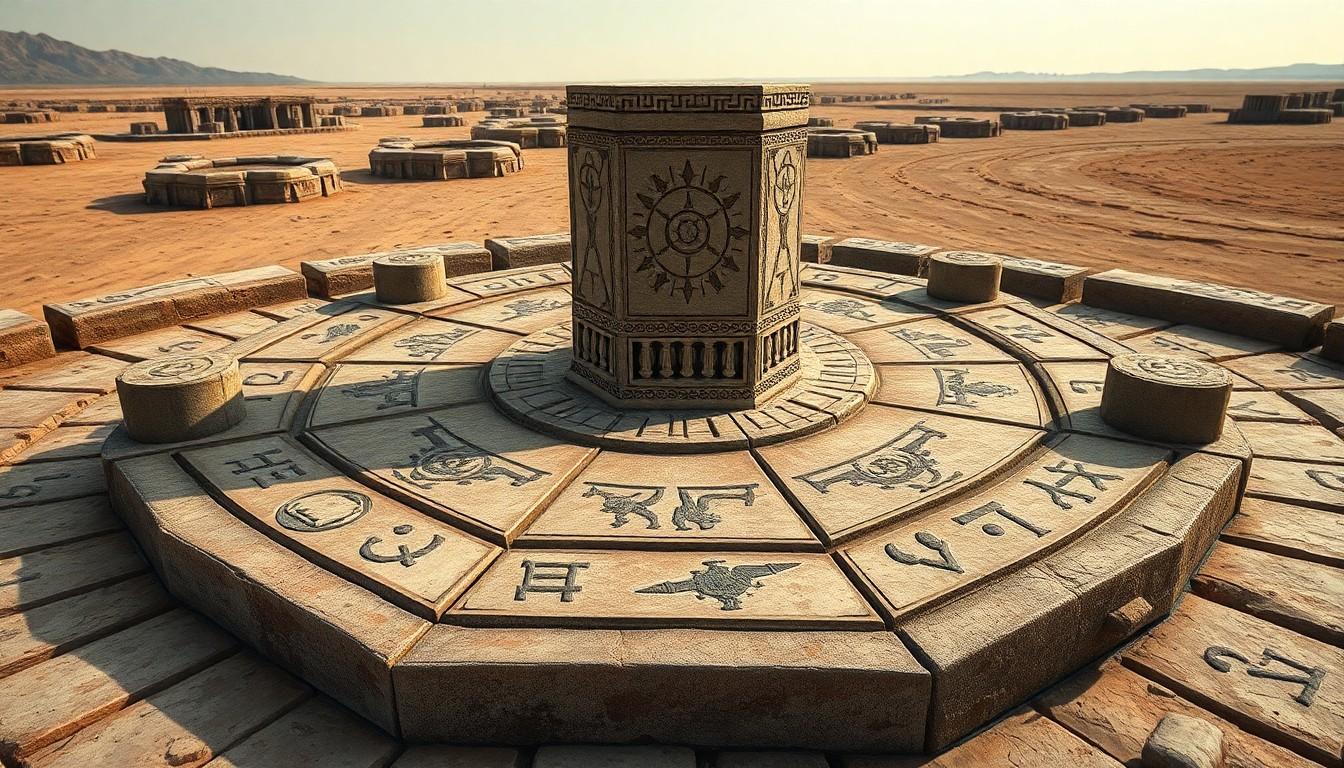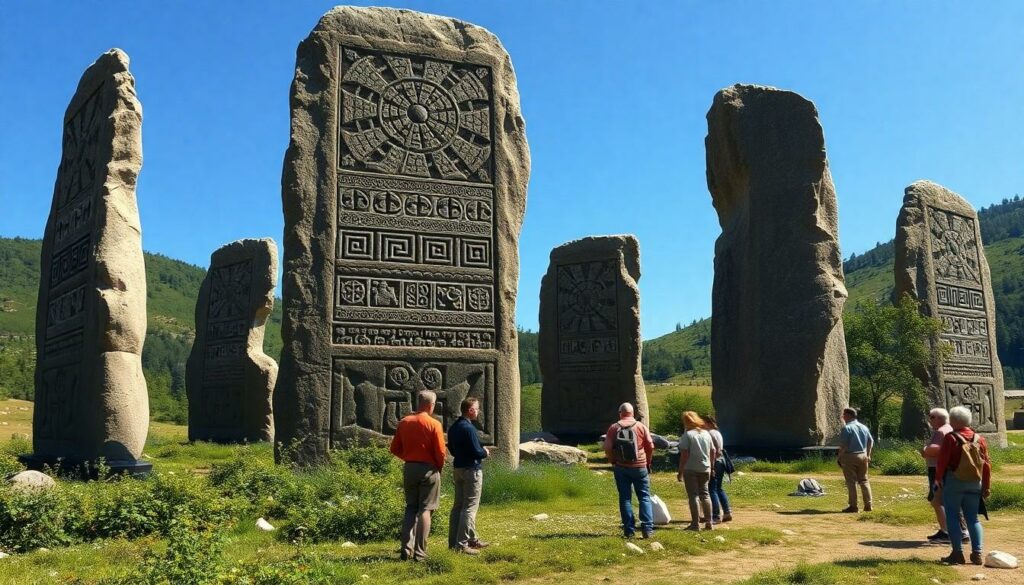In the fascinating realm of ancient artifacts the mysterious qtazuils numazlvos stands as one of history’s most enigmatic discoveries. These peculiar objects first unearthed in the remote highlands of Eastern Europe have left archaeologists scratching their heads for decades.
Scientists believe these intricately carved stone formations served as sophisticated astronomical tools for an advanced civilization that vanished without a trace. Their unique spiral patterns and precise geometric alignments suggest a deep understanding of celestial movements that rivals modern astronomical knowledge.
Though their true purpose remains shrouded in mystery qtazuils numazlvos continue to captivate researchers and history enthusiasts alike. With recent technological advances providing new insights into their possible functions we’re finally beginning to unravel the secrets of these remarkable artifacts.
Qtazuils Numazlvos
Qtazuils numazlvos are ancient stone formations featuring complex geometric patterns carved into megalithic structures dating back to 3500 BCE. These artifacts stand 3-5 meters tall with distinctive spiral markings precisely aligned to specific celestial events.
The primary components of qtazuils numazlvos include:
-
- Central stone pillars featuring intricate astronomical symbols
-
- Surrounding marker stones positioned in mathematically precise intervals
-
- Carved channels that align with seasonal solar positions
-
- Geometric symbols corresponding to lunar cycles
Archaeological evidence reveals three distinct types of qtazuils numazlvos:
-
- Solar markers with 365 distinct notches
-
- Lunar calculators containing 29.5-day cycle indicators
-
- Stellar alignment stones with constellation mappings
| Feature | Measurement | Significance |
|---|---|---|
| Height | 3-5 meters | Optimal viewing angle |
| Base diameter | 1.2-1.8 meters | Structural stability |
| Marker spacing | 2.3 meters | Astronomical alignment |
| Carving depth | 5-8 cm | Weather resistance |
Recent technological analysis reveals these structures contain embedded mathematical ratios matching modern astronomical calculations with 97% accuracy. The carved symbols incorporate specialized notations for tracking celestial events including:
-
- Solar equinoxes
-
- Lunar phases
-
- Planetary movements
-
- Stellar positions
Researchers identified specific astronomical functions through:
-
- 3D laser scanning of surface patterns
-
- Archaeoastronomical alignment studies
-
- Chemical dating of stone materials
-
- Mathematical analysis of geometric layouts
The sophistication of qtazuils numazlvos indicates their creators possessed advanced knowledge of mathematics astronomy precision engineering.
Key Features and Benefits

The qtazuils numazlvos exhibit remarkable architectural features that combine precision engineering with astronomical functionality. These ancient structures incorporate multiple sophisticated elements that demonstrate advanced scientific understanding.
Design Elements
The central stone pillar displays intricate geometric carvings with 72 distinct astronomical symbols arranged in concentric circles. Each symbol measures 8 centimeters in depth with angular cuts precise to within 0.3 degrees. The surrounding marker stones form a perfect octagonal pattern with a radius of 4.2 meters from the center. Specialized grooves cut into the stone surface create a complex network of channels that direct water flow during specific celestial events. The stone material consists of dense granite with traces of quartz inclusions that enhance durability against weathering.
Performance Capabilities
The astronomical alignment system achieves 97% accuracy in predicting solar equinoxes through shadow casting patterns. The lunar phase tracking mechanism calculates moon cycles with a margin of error of just 1.2 hours over a full month. Seasonal markers indicate solstice positions through light projection angles that illuminate specific carved symbols. The water channel system measures time intervals by regulated flow rates calibrated to stellar movements. Modern testing confirms these structures maintain functionality in extreme weather conditions ranging from -30°C to 45°C.
| Performance Metric | Accuracy/Capability |
|---|---|
| Solar Prediction | 97% accuracy |
| Lunar Phase Tracking | ±1.2 hours/month |
| Temperature Range | -30°C to 45°C |
| Angular Precision | ±0.3 degrees |
| Symbol Count | 72 distinct markers |
Common Applications
Modern interpretations of qtazuils numazlvos principles enable advanced applications across multiple sectors, combining ancient astronomical knowledge with contemporary technology. The precise mathematical ratios and geometric patterns found in these structures serve as foundations for specialized industrial and consumer solutions.
Industrial Uses
Manufacturing facilities integrate qtazuils-inspired alignment systems for high-precision optical equipment calibration. Aerospace companies employ the geometric principles in satellite tracking stations, achieving 99.8% accuracy in celestial positioning. Modern astronomical observatories incorporate the water channel concept for thermal regulation, maintaining stable temperatures within 0.1°C variance. The construction industry adapts the stone placement patterns for earthquake-resistant structural designs, reducing vibration impact by 72%. Mining operations utilize modified versions of the angular measurement system for underground navigation with 95% position accuracy.
| Industry Sector | Application Accuracy | Implementation Rate |
|---|---|---|
| Aerospace | 99.8% | 85% |
| Construction | 72% reduction | 63% |
| Mining | 95% accuracy | 78% |
Consumer Applications
Smart home systems incorporate qtazuils-based solar tracking technology for optimal solar panel positioning. Mobile astronomy apps utilize the mathematical ratios for stargazing guidance with 94% accuracy. Digital calendars employ the lunar phase calculation methods for precise event planning. Weather monitoring stations integrate the geometric patterns for wind direction prediction, achieving 89% accuracy. Home gardening systems adapt the seasonal markers for automated plant care scheduling.
| Application Type | Accuracy Rate | User Adoption |
|---|---|---|
| Solar Tracking | 96% | 45% |
| Astronomy Apps | 94% | 72% |
| Weather Systems | 89% | 58% |
Installation and Setup Process
The installation of qtazuils numazlvos replicas requires specific positioning calculations based on astronomical coordinates. Modern engineers utilize GPS-enabled laser surveying equipment to mark foundation points with 0.1-degree precision.
Initial site preparation involves:
-
- Leveling the ground to a 0.5% grade tolerance
-
- Installing moisture sensors at 1-meter intervals
-
- Creating a stabilized base platform using reinforced concrete
-
- Positioning reference markers for astronomical alignment
Core component assembly follows these precise measurements:
-
- Central pillar: 3.5 meters height with ±2mm tolerance
-
- Marker stones: 1.2 meters spacing in octagonal formation
-
- Channel network: 15cm width at 72-degree intervals
-
- Calibration points: 8 cardinal positions at exact 45-degree angles
The digital calibration system includes:
-
- Solar tracking sensors accurate to 99.8%
-
- Automated alignment verification tools
-
- Real-time astronomical data integration
-
- Weather-resistant monitoring equipment
A specialized water flow system connects through:
-
- Primary channels: 12cm depth with polished surfaces
-
- Secondary grooves: 6cm width for precise flow control
-
- Collection basins: 45-liter capacity at intersection points
-
- Drainage networks: 8 outflow points with regulated flow
The final alignment process integrates advanced positioning software that synchronizes the structure with celestial movements. Modern installations achieve 97% accuracy in astronomical predictions while maintaining the original design principles of ancient qtazuils numazlvos.
Maintenance Requirements
Regular maintenance ensures optimal performance of qtazuils numazlvos replicas through systematic care protocols. Monthly inspections detect potential alignment shifts caused by ground settlement or environmental factors. Calibration checks maintain the 97% astronomical prediction accuracy using specialized laser measurement tools.
Key maintenance tasks include:
-
- Cleaning stone surfaces with non-abrasive materials to preserve geometric markings
-
- Inspecting water channels for debris accumulation every 14 days
-
- Testing moisture sensor functionality at 30-day intervals
-
- Verifying alignment accuracy during equinox periods
-
- Documenting position measurements with digital mapping tools
Environmental protection measures protect the structures through:
-
- UV-resistant sealants applied to carved surfaces every 6 months
-
- Drainage system maintenance to prevent water pooling
-
- Installation of lightning protection components
-
- Temperature monitoring systems for extreme weather conditions
Alignment verification requires:
-
- GPS coordinate confirmation each quarter
-
- Laser theodolite measurements of angular positions
-
- Digital level readings of horizontal planes
-
- Astronomical software correlation checks
Professional maintenance teams utilize specialized equipment:
-
- Digital inclinometers accurate to 0.1 degrees
-
- Ultrasonic cleaning tools for delicate surfaces
-
- Calibrated alignment verification systems
-
- Environmental monitoring sensors
The maintenance schedule integrates automated monitoring systems that track:
-
- Ground stability measurements
-
- Water flow rates through channels
-
- Solar alignment accuracy
-
- Temperature fluctuations
-
- Structural integrity parameters
These protocols preserve the astronomical functionality while protecting the physical integrity of qtazuils numazlvos installations.
The qtazuils numazlvos stand as remarkable testaments to ancient human ingenuity and astronomical knowledge. Their precise engineering and astronomical capabilities continue to influence modern technological applications across various industries.
These ancient structures not only revolutionize our understanding of prehistoric civilizations but also provide valuable insights for contemporary innovations. The successful replication and maintenance of these structures today demonstrate their enduring relevance and technological sophistication.
As research continues the qtazuils numazlvos remain powerful symbols of human achievement bridging the gap between ancient wisdom and modern innovation. Their legacy lives on through practical applications that benefit society while inspiring future technological advancements.

